|
Printables |
PowerPoints |
Online exercises |
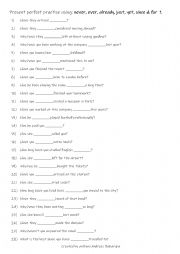
|
A2-B1 Present perfect practise using never, ever, already, just, yet, since & for 1
Practising the present perfect with words like never, ever, already, just, yet, since, and for is essential for students as it enables them to discuss experiences, recent events, and ongoing situations with clarity. These time markers help convey whether actions are completed, in progress, or relevant to the present, which is crucial for effective ...
Level: elementary
Age: 9-100
Type:
Downloads: 106
|
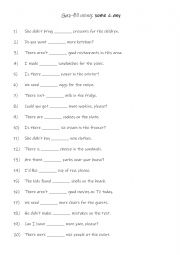
|
Gap-fill using: some & any
Students read the sentences and complete the gap-fill with the correct quantifier. This worksheet is suitable for A1-A2 students. Answers on page 2
Level: elementary
Age: 8-100
Type: worksheet
Downloads: 120
|
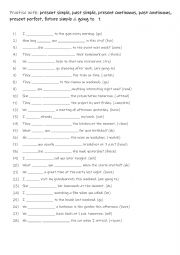
|
A2-B1 Practise with present simple, past simple, present continuous, past continuous, present perfect, future simple & going to 1
Students should practice the Present Simple, Past Simple, Present Continuous, Past Continuous, Present Perfect, Future Simple, and "Going to" tenses because these are fundamental to expressing a wide range of ideas in English. Mastering these tenses allows students to describe habits, routines, actions in progress, past events, completed actions, f...
Level: intermediate
Age: 8-100
Type:
Downloads: 124
|
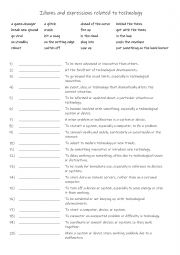
|
B1+-C1 Idioms and expressions related to technology 1
First, students need to familiarise themselves with the 20 idioms and expressions and their meanings. Then they read the definitions to see which one is being described and write that word in the space provided Answers on page 2.
Level: intermediate
Age: 11-100
Type:
Downloads: 111
|
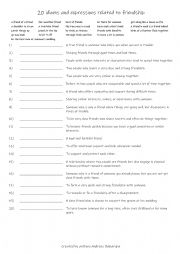
|
20 Idioms and expressions related to friendship B2-C1 (1)
Learning friendship-related idioms helps students improve their communication by making their language sound more natural and fluent. It broadens their vocabulary, allowing them to express emotions and relationships more effectively. These idioms also deepen cultural understanding and foster stronger connections, as they reflect shared social value...
Level: intermediate
Age: 12-100
Type:
Downloads: 115
|
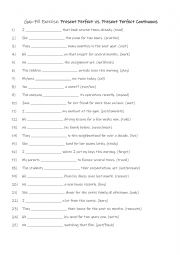
|
Gap-Fill Exercise: Present Perfect vs. Present Perfect Continuous
Learning the difference between the Present Perfect and the Present Perfect Continuous tenses can help students communicate more precisely in English.Mastering these tenses enhances a student�s ability to express time and aspects of actions in English, making their communication more effective and accurate. Students read the sentences looking for...
Level: intermediate
Age: 10-100
Type:
Downloads: 113
|

|
3 different ch sounds: tʃ sound as in chicken, k sound as in chorus & ʃ sound as in chef.
Students read the word in bold aloud to work out what sound the Ch makes. They then write the phonemic letter at the end of the sentence. Answers on page 2
Level: elementary
Age: 10-100
Type:
Downloads: 106
|
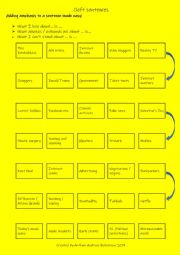
|
Adding emphasis to your opinion
Using cleft sentences to add emphasis to your ideas / thoughts. All the topics / themes are of current interest to stimulate conversation.To help develop conversational skills for B1 students, get the students to give examples to support their opinions.
Suitable for both pairwork and small groups.
Level: intermediate
Age: 14-100
Type: worksheet
Downloads: 273
|
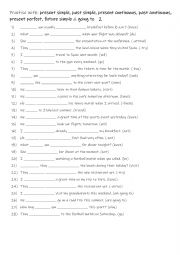
|
A2-B1 Practise with present simple, past simple, present continuous, past continuous, present perfect, future simple & going to 2
First, students need to familiarise themselves with the tenses and use. Then they read the sentences to work out which one is needed to complete the gap-fill using the infinitive in (). Each tense is used 3 times! Answers on page 2
Level: elementary
Age: 9-100
Type:
Downloads: 121
|
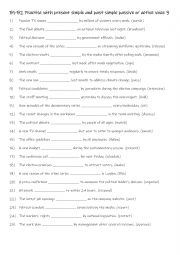
|
B1-B2 Practise with present simple and past simple passive or active voice 3
Understanding both voices help students become more versatile in expressing ideas, improving their ability to describe events and actions in the present and past from different perspectives. First, students need to familiarise themselves with the 2 tenses using both the active & passive voice. Then they read the sentences to see which one is needed...
Level: intermediate
Age: 12-100
Type:
Downloads: 107
|
|
|
|
|












